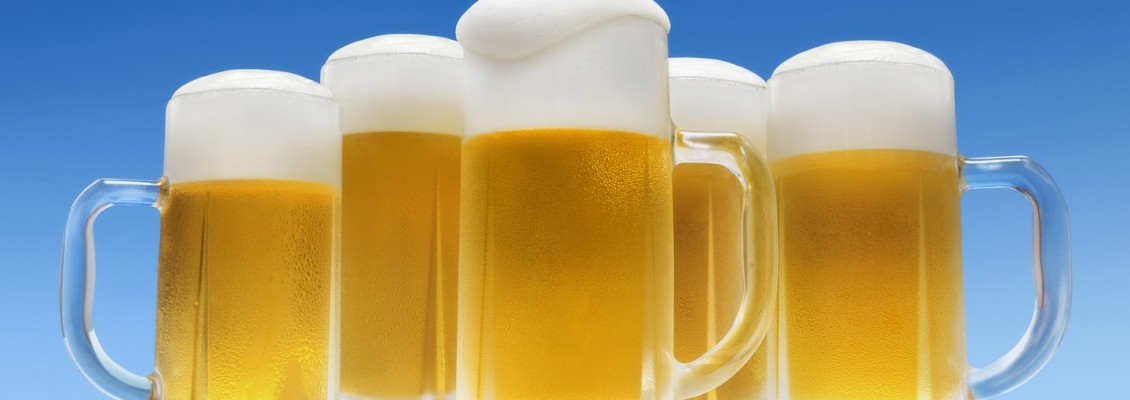Greek Beers - Lagers, Pilsners and More!

Beer then, a product intertwined with the Greek summer. In recent years, many microbreweries have appeared in our country, perhaps somewhat belatedly given that we are quite high in beer consumption to which our warm Mediterranean climate contributes. But how much do we know about beers and type of beer we consume? Many Greeks know little about beer types and simply characterise beer by its bitterness, freshness, lightness, colour, etc.
It's time to clarify everything and explain as easily as possible the above characteristics. Beers are mainly catagorised based on the production process:
Lager or Pilsner
Lagers are characterised as bottom-fermented beers, where the yeast settles at the bottom during the production process. This category includes most of the retail beers on the market. They have light aromas, mainly of malt, hops, spices, citrus, and a note of herbs. Their colour can be blonde or darker and they come in various types:
Who would have expected that Pilsner (or Pils), is a Lager beer with a high IBU (International Bittering Units), which is the international unit of measuring the bitterness of a beer, resulting from the amount of hops used in its production and giving us a strong bitter aftertaste. It is the most famous type of lager, with the largest production percentage worldwide.
Also in the Lager category we find Amber, a reddish lager with aromas of hops and caramel. Bock, a dark beer with a slightly increased alcohol content and aromas of chocolate and caramel. Dunkel, a dark brown beer with aromas of chocolate and caramel, and Rauchbier, a dark-coloured beer with a strong smoke aroma.
To enjoy them properly, serve at temperatures of 4 to 7 degrees C, without ice cubes or frozen glasses with ice pieces that distort their characteristics. Also, the glass must be sparkling clean, as this greatly affects the quality and duration of the foam. At a table, accompany the lagers with almost everything, as they love appetisers, while pilsners are preferably offered with correspondingly bitter and spicy dishes, such as dishes containing olives, spices, radishes, or rocket, or even spicy cheeses like saganaki, kefalotyri, mature kefalograviera, etc.
Ale Beers
Ales are characterised as top-fermented beers, with complexity in their character. In this category, we encounter aromas of green fruits, tropical fruits, notes of caramel, cocoa, and coffee. This category also has its types:
- Red Ale, reddish, which comes from the use of malt from Vienna and with a slight bitterness in the aftertaste.
- Weisse, which is mainly made from wheat and perhaps most of us would think it is a category by itself. Most of these, in this category, are unfiltered and therefore have a cloudy colour due to the yeast residues. They have extremely fruity aromas and a pleasant, refreshing aftertaste.
- Stout, Irish-based black-coloured, with a smooth taste. Here we have four (4) types (dry, sweet, double stout, and imperial) with aromatic and taste variations.
- Strong Golden Ale, with intense hop aromas. This beer is high in alcohol.
- Trappist, monastic beer, which matures for three (3) years. Produced in monasteries (mainly in Belgium), hence the term "monastic". Caramelised sugars are added to this beer, it is flavoured with spices and re-fermented in the bottle.
- Biére de Garde, unfiltered beer, bottled with the yeast, in order to continue fermentation in the bottle.
- Abbey, produced with the pattern of monastic beers, but its production is not done by monasteries.
Lambic Beers
Lambic, is the third category to which beers produced with natural fermentation belong, without the addition of yeast.
As wine lovers understand, there are several similarities in the level of fermentation and filtration! So, the next time you consume beer, look at the label and you will recognise what you are drinking. Always try to taste a different type each time to find what suits you!.
Greek Microbreweries
As you can understand for us at Greece and Grapes, products from Greek microbreweries could not be missing, making your journey into the world of beer enjoyable. They produce beers with traditional and sometimes experimental recipes and are distinguished for the quality and complexity of their flavours.
The microbreweries have a strong local approach, contributing to the culture of each community. Among our selections, you will find Lager, Pilsner, Amber Lager, Pale Ale, House Ale, Red Ale, Farmhouse Ale, IPA, Porter, Stout.
We mention some Greek microbreweries and their products that have stood out in your purchases:
Nissos, with your preference for Nissos Pilsner being evident as well as for Dathènes, which produces on behalf of others.
Voreia, with the Stout consistently being your favourite.
Chios, with the House Ale being one of the first Greek beers that continues to excite.
Noctua from the heart of Athens that has won your heart with the Head Twister Pale Ale.
Strange Brew, the creative team with the Jasmine IPA that are the talk of the town.
Elixi, with the Delphi being a starting point in the world of microbrewery for all beer lovers.
Kirki, which like the witch Kirke has "enchanted" you with the Pale Ale.
Corphes, the heretical one flavoured with mountain tea and sage, which you constantly request.
Donkey, with the classic Yellow for an imaginary trip to magical Santorini.